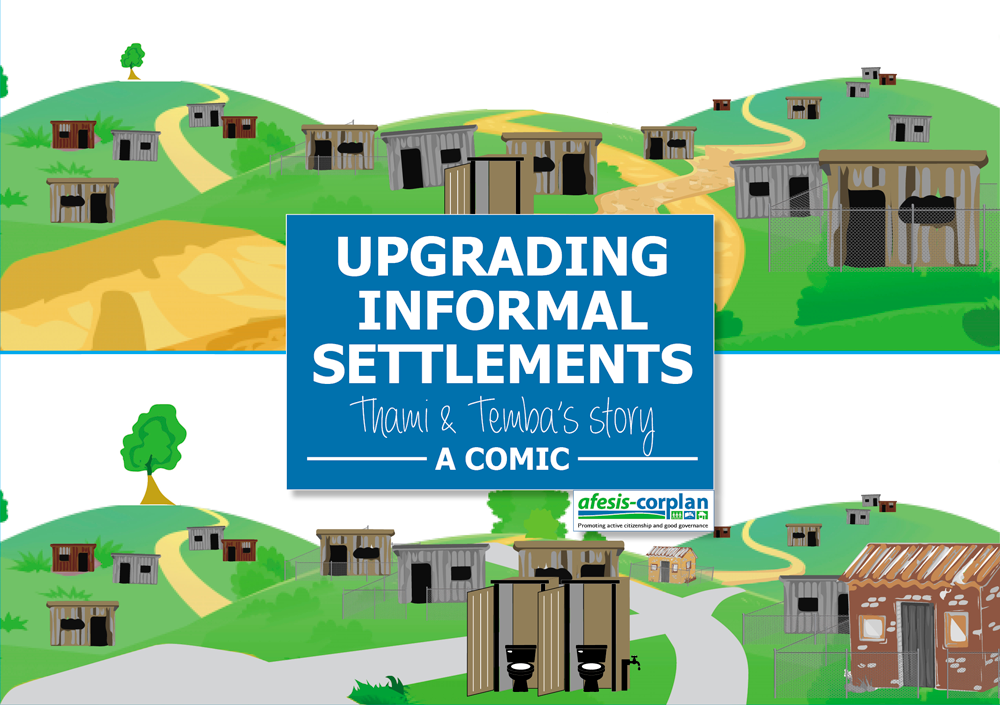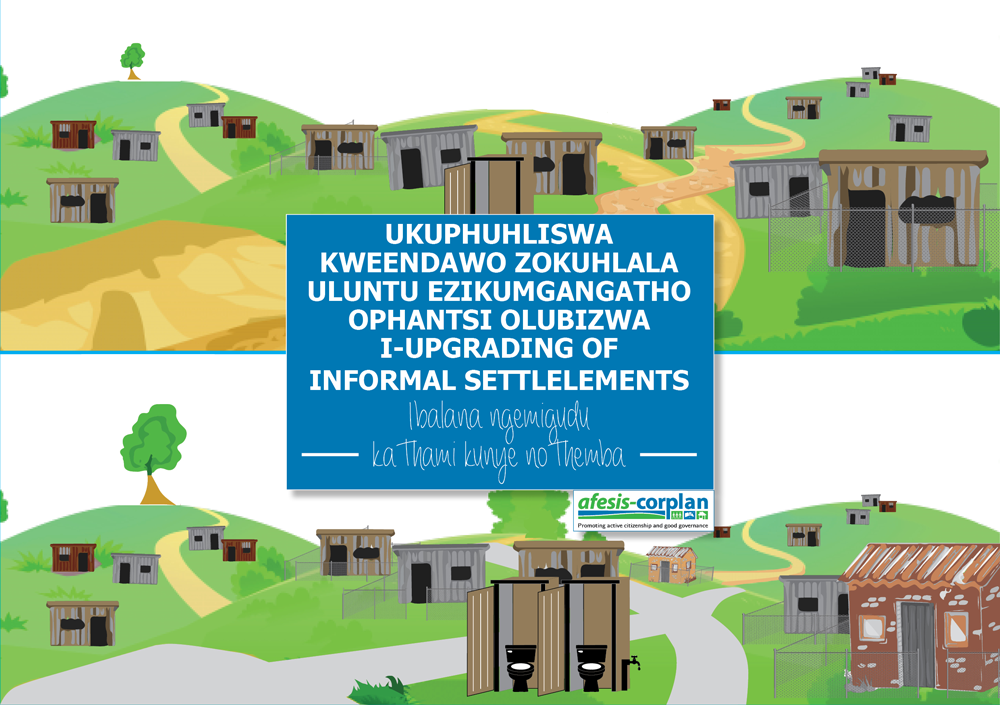Afesis
Upgrading informal settlements
UPGRADING INFORMAL SETTLEMENTS
Overview
The national government has identified the upgrading of informal settlements as a key component of its human settlement development approach, targeting (as part of its 2019-2024 outcome based targets for human settlement development) the formalisation/ upgrading of 1,500 informal settlements to phase 3 of the Informal Settlements Upgrading Programme.
Information
Afesis-corplan is collating information relating to the upgrading of informal settlements. Click on the links below for more information on upgrading of informal settlements:
- Upgrading of informal settlements – Frequently Asked Questions (including Imibuzo Ebuzwa Rhoqo Kwaneempedulo – the Xhosa translation)
- A info-graphic showing the Categories for Informal Settlement Upgrading
- A table showing different Norms and Standards for Water and Sanitation
- Buffalo City Metropolitan Municipality Upgrading of Informal Settlements policy and strategy
- Managed Land Settlement (information collated by Afesis-corplan)
- Social Audits (Information collated by Afesis-corplan)
- Upgrading resource library list (from City Support programme)
- National Upgrading Support Programme (NUSP) resource kit
- Informal Settlement Upgrading Partnership Grant (for Municipalities and for Provinces) – Extracts from the Division of Revenue Bill February 2021.
- Opinion piece on subsidy quantum increases (from 2022 but still relevant with respect to 2023 subsidy increase)
Upgrading of Informal Settlement radio drama
Check out below the radio drama (in English and Xhosa) that Afesis-corplan has developed that aims to educate people upgrading of informal settlements. To find out more about upgrading have a look at all the other information on this webpage, speak to the local ward councillor and visit the municipality to find out what they are doing to upgrade informal settlements.
The radio drama was produced by Sithembile Xaso with voiceover by Mandilakhe Tini (as Thami), Yoliswa Kundulu (as PJ) and Phumzile Njikazi (as Themba). The script was written by Vusi Gqomose.
Also click here to listen to an interview with Qhamani Tshazi (an Afesis-corplan employee) talking about the upgrading of informal settlements after the launch of the radio drama on MdantsaneFM on 24 March 2021 . Interview in Xhosa with English sub titles.
English
Xhosa
Xhosa
Upgrading of informal settlements: Thami and Temba’s story
Click appropriate image to view an English or Xhosa version of a comic that explains how Thami and Temba worked with their municipality to upgrade their informal settlement.


